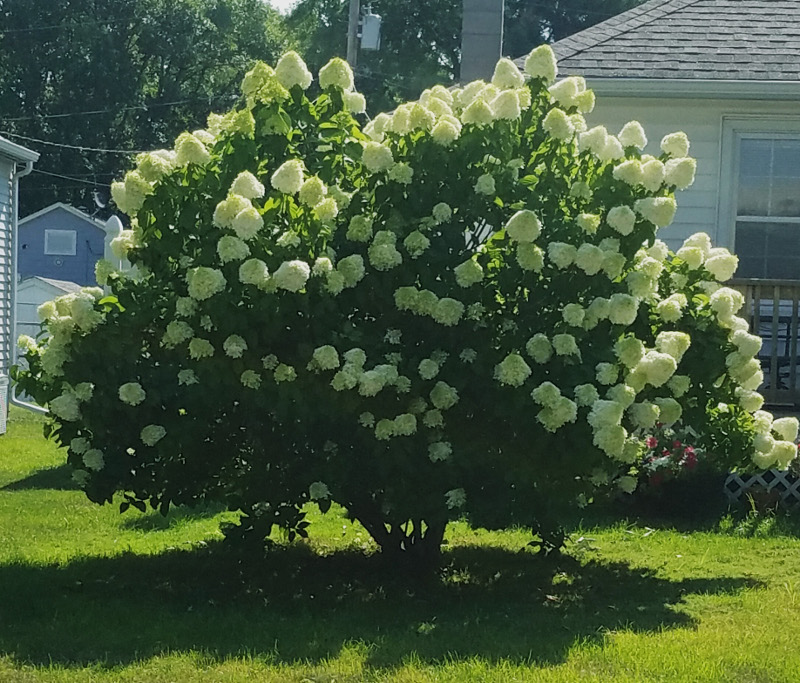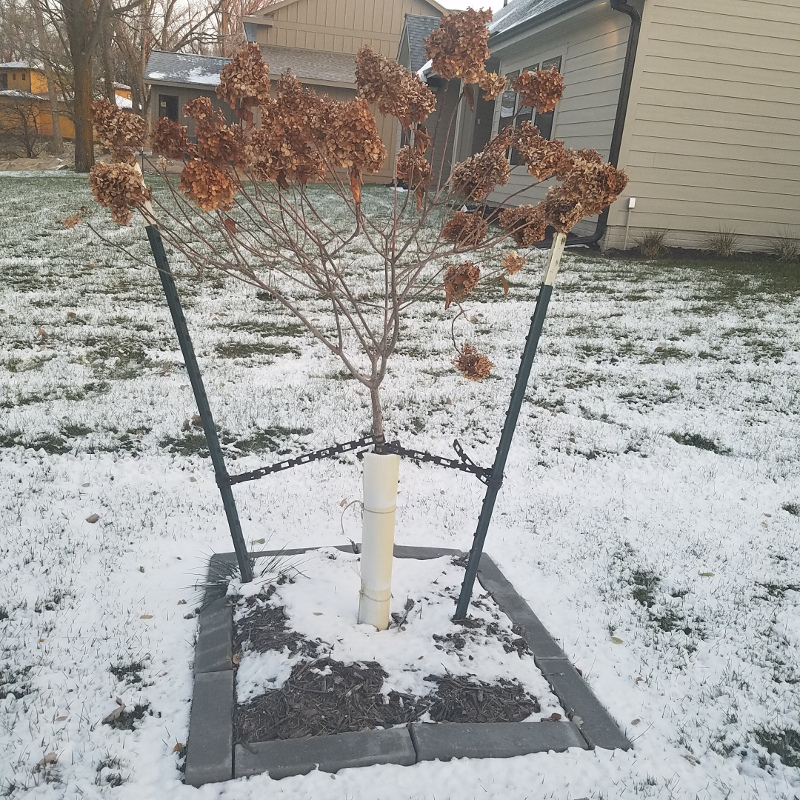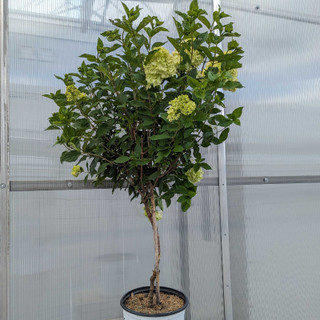The Hydrangea Tree
Of all the small, flowering trees, hydrangea trees are the most dramatic when in full bloom. In addition, they are easy to grow in almost all parts of the U.S. (except frost free areas), and they will bloom dependably year after year.
Hydrangea trees do not naturally grow into the shape of a tree. Left to their own devices, all hydrangeas will grow into shrubs with multiple stems. The only type hydrangea that can be made into a tree is Hydrangea paniculata. Nurseries often graft them onto a standard and train them to grow as trees when they are very young. Paniculatas dependably bloom on new growth every year in mid-summer, and the show is spectacular.
Planting
Planting the hydrangea tree properly is the key to its success. It should be planted in a location that receives at least four hours of sun a day for most of the spring and summer. It can thrive in full sun, but the blooms may last longer if they are in some shade during the hottest part of the day. Like most plants, it does best in moist but well-drained soil. It should not be planted too deeply. It should be planted at the same level as it was in the pot. The first year it is planted, the little tree should be watched carefully, and the soil should not be allowed to dry out.
If you purchase a hydrangea from the nursery already in tree form, you should provide extra bracing & support for the tree the first year or two. This will help the tree remain upright in strong windstorms, and ensure the tree grows straight up instead of sideways. This can easily be done with 2 or 3 posts in the ground that are attached to the tree with string. So the tree can't flex sideways as far.
Pruning
Pruning may be the concern of many who grow this plant. Fortunately, pruning a paniculata will not cause any problems with blooming. It can be pruned at any time of the year except when blooms are forming on the tips of the branches in early to mid-summer. Bloom formation is easy to see if one looks carefully, even in the early stages. These trees can be left to grow naturally, or they may be pruned to control their shape.
After they have finished blooming in July or August, any branches growing across other branches may be removed. (I try to prune so that all branches are radiating toward the outside of the tree, rather than growing across the middle of the tree and across other branches.) The finished blooms may be removed at any time if the tree is small enough for one to reach the blooms. However, some people like to leave the blooms on the tree for winter interest, especially in areas where they can look lovely with snow on them.
Winter Care
Some people do cut the dead blooms off in the winter, so snow doesn’t weigh the branches down and break them off. Also, add a couple of inches of mulch around the base to help hold moisture in and insulate the roots. You can also wrap the ‘trunk’ with newspaper, felt, burlap, or a tree guard loosely to shield it from the wind. It also provides some protection from deer during the winter, when the deer are the hungriest. This probably isn’t necessary unless you live in an area with a very harsh winters or the first year or two after planting.
Beautiful Hydrangea Trees For Sale
While any variety of Hydrangea paniculata may be grown as a tree, the most common variety planted at this time is ‘Limelight.’ The blooms on ‘Limelight’ are huge and can be seen from a great distance.
-A big thank you to our friend and renowned hydrangea expert Judith King for helping us write this article.
 |
Author Judith King - Published 10-17-2017 |







